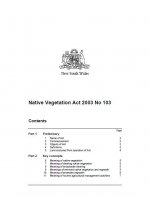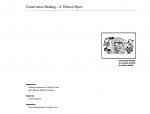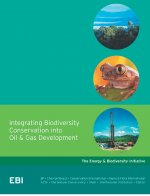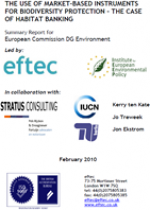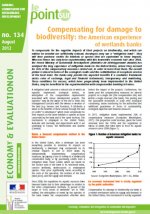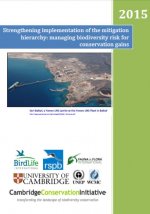Integrating invasive mammal eradications and biodiversity offsets for fisheries bycatch: conservation opportunities and challenges for seabirds and sea turtles
C. Josh Donlan, Chris Wilcox - Biol Invasions, Biol InvasionsThe removal of invasive mammals from islands is one of societys most powerful tools for preventing extinctions and restoring ecosystems. Given the demonstrable high conservation impact and return on investment of eradications, new networks are needed to fully leverage invasive mammal eradications programs for biodiversity conservation at-large. There have been over 800 invasive mammal eradications […]
Native Vegetation Act 2003 No 103
Government of AustraliaAn Act relating to the sustainable management and conservation of native vegetation; to repeal the Native Vegetation Conservation Act 1997; and for other purposes. [Assented to 11 December 2003]
Council Directive 92/43/EEC of 21 May 1992 on the Conservation of Natural Habitats of Wild Fauna and Flora: Annex IV
European UnionThe species listed in this Annex are indicated: by the name of species or subspecies, or by the body of species belonging to a higher taxon or to a designated part of that taxon.
Conservation Banking A Technical Report
Toyon Environmental Consultans, Inc.This report has been prepared as a reference for a variety of audiences, but the primary target is someone who is considering establishing a conservation bank. The text is addressed to that person — when we say “you”, we mean the person seriously interested in setting up a conservation bank. However, we hope that the […]
Integrating Biodiversity Conservation into Oil and Gas Development
The Energy and Biodiversity InstituteIncreasingly, areas of interest for oil and gas development are also being recognized and valued for their biodiversity resources. Biodiversity, the complex web of genes, species, ecosystems and ecological processes that sustain life on Earth, provides human society with food, medicines, natural resources, ecological services and spiritual and aesthetic benefits. Yet, this biodiversity is under […]
THE USE OF MARKET-BASED INSTRUMENTS FOR BIODIVERSITY PROTECTION THE CASE OF HABITAT BANKING
Summary Report for European Commission DG Environment
EXECUTIVE SUMMARY: This is the summary report of the consortium led by Economics For The Environment Consultancy Ltd (eftec) and the Institute for European Environmental Policy (IEEP) for the contract for European Commission Directorate-General Environment on The Use of Market-based Instrument for Biodiversity Protection the case of habitat banking (ENV.G.1/ETU/2008/0043).
Compensating for damage to biodiversity
the American experience of wetlands banks
Review of the US experience with wetlands banking
Strengthening implementation of the mitigation hierarchy
managing biodiversity risk for conservation gains
Cambridge Conservation InitiativeThe scale and pace of development is intensifying across the mining, oil & gas, agriculture, infrastructure, forestry and housing sectors. Such rapid and large scale expansion in commercial development threatens to irreversibly transform landscapes around the world, putting pressure on biodiversity and the people that depend on it for their livelihoods and well-being. Understanding the […]
Environmental Offset Policies, Principles, and Methods: A Review of Selected Legislative Frameworks
Bruce McKenneyEnvironmental offsets seek to ensure that unavoidable adverse environmental impacts of development are counterbalanced by environmental gains, with the overall aim of achieving a net neutral or beneficial outcome. In line with sustainable development, offsets represent one important tool for maintaining or enhancing environmental values in situations where social and economic development is sought despite […]
Victoria ‘s Native Vegetation Management: A Framework for Action Summary Brochure 1
Government of AustraliaThe need for a consistent approach to native vegetation management and retention across the State and support for Local Government during the introduction of the Framework, were issues repeatedly highlighted by submissions to the draft document. In recognition of this feedback and the technical nature of the Framework, there are 10 regionally based Native Vegetation […]


